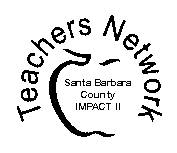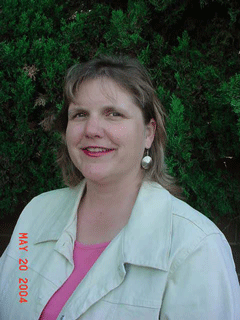The TeachNet Project sponsored with major funding by the AT&T Learning Network,
seeks to improve student achievement by providing training, grants, networking and resource sharing to teachers at four of the Teachers Network affiliates nationwide.


www.qad.com
Kids as Collectors, Creating Mini-Museums
How
it works:
Creating a mini museum was inspired by the natural curiosity of eight and nine year olds who find anything in their natural world interesting and worthy of further investigation. Realizing their energy exhibited by a natural curiosity and a knack for collecting "treasures" I was urged to provide an outlet for these junior collectors by harnessing a student centered "teachable moment."
Collecting begins with a theme opening activity where students decorate a collecting box at home and begin placing objects of interest in their box. Students will be expected to keep a journal of what they place in their box and how they acquired the object and when and where it was found. If the item was purchased they need to record the purchase price and date. The second lesson invites students to use a hot list of web sites to enter a digital reference desk and define vocabulary words. The fourth lesson begins with a virtual visit of a variety of museums where students are lead to pay close attention to the maps and layouts and answer questions for each museum site. The maps and floor plans are studied to achieve an understanding of how collections are organized within a building or series of buildings. If a local museum is accessible students can take a field trip to the museum and or look at maps of a museum's layout. Students will begin to understand the different types of museums and their respective categories used for organizing collections.
Students move from understanding how museums are organized to a reflection of their own interests and motivations for collecting things. Discussions of reasons for creating a collection are discussed. Historical and educational perspectives, motivation from intrinsic and extrinsic values are discussed and explored on the web. Multiple meanings and definitions of "treasure" are explored. Students study the word "treasure" in multiple contexts by visiting a digital reference desk where they use dictionaries, thesaurus and other Internet resources.
Finally, students research, create, organize, and document a private collection. Students are encouraged to further study their collections after browsing the web and discovering their personal interests. The culminating activity is a "grand opening" of a Mini Museum where students showcase their collections.
Teacher observation, worksheets, and performance rubrics are given for lessons. Worksheets, collector logs, oral reports and anecdotal observations evaluate student progress, level of participation, and quality of work.
Assessment:
Lesson rubrics offer evaluation criteria along with scoring guidelines.
Standards:
· Students will write descriptions that use concrete sensory details to present and support unified impressions of places, things or experiences.
· Students learn to use greater detail when describing objects for documentation purposes.
· Systematic vocabulary development for sorting, categorizing, and classifying objects.
· Use sentence and word context clues to find unknown word meanings.
· Use a dictionary to learn the meaning and other features of unknown words.
· Students demonstrate a working knowledge for alternative criteria when sorting and describing their collections.
· Students will, "Make descriptive presentations that use concrete sensory details to set forth and support unified impressions of people places thing, and experiences"
· Students will write for a specific purpose, an invitation
· Students will, "Make descriptive presentations that use concrete sensory details to set forth and support unified impressions of people places thing, and experiences"
· Numerous Technology standards
Estimated number of class periods for students to complete this project:
Each of the five lessons takes approximately between 45 and 60 minutes. Extra time is needed for independent practice and work time. The unit can be done in less than a month, approximately eleven class periods.
Software or Materials Used:
Computer with Internet access, Digital Camera Internet connection, "hot list" for recommended internet sites, knowledge of uploading media players for viewing videos. Use of "search" features of web sites.
Keywords:
virtual museum tours, collections, collecting, treasures, digital reference desk, reference materials, museum tours, virtual tours, presentations, treasure hunt
The Students:
The students that worked on this unit were third graders ranging from 8 years old to 10 years old. These students were from several different ethnic and economic backgrounds; such as Filipino, Mexican, American, field working families and middle class working families. GATE (gifted students) as well as resource students were involved in his project
Overall Value:
Students experience maneuvering through digital tours and learn to write artifact descriptions that use concrete sensory details. One goal of this unit is for the students to experience and have an understanding of the variety and uniqueness of museum collections. Students are given opportunities to experience unique places and things and experience exposure to greater vocabulary in a fun way. Another goal of this unit is to give the students experience in using the Internet for seeking out information, and homework help in subject areas
Details:
Subject Area: Language Arts
Second Subject Area : Science, Social Studies
Starting Grade Level: 2
Ending Grade Level: 4
Tips for the Teacher:
Use a smart board in a lab format to display treasure hunt as students navigate through web sites. If there is no "smart board," make copies of the treasure hunt for students to refer too when looking up web sites. It is also advised to spot check a few of the treasure hunt web links to make sure they are still current.
Kristen L. Burke
School: Ida Redmond Taylor Elementary
E-mail address:
Kristen L. Burke has taught in Santa Barbara County for the Santa Maria-Bonita School District since 1997. Her experience includes teaching first through third grade.
She earned National Board Certification in 2003 as an Early Childhood Generalist. She holds a Masters in Reading Language Arts and a Reading Specialist Credential from the University of La Verne, La Verne California. Her family background in agriculture and science lead her to Cal Poly, San Luis Obispo where she earned her Bachelor of Science. Upon graduation she worked for the California State Division of Fairs and Expositions and then for Santa Barbara County as an Agricultural Biologist.
